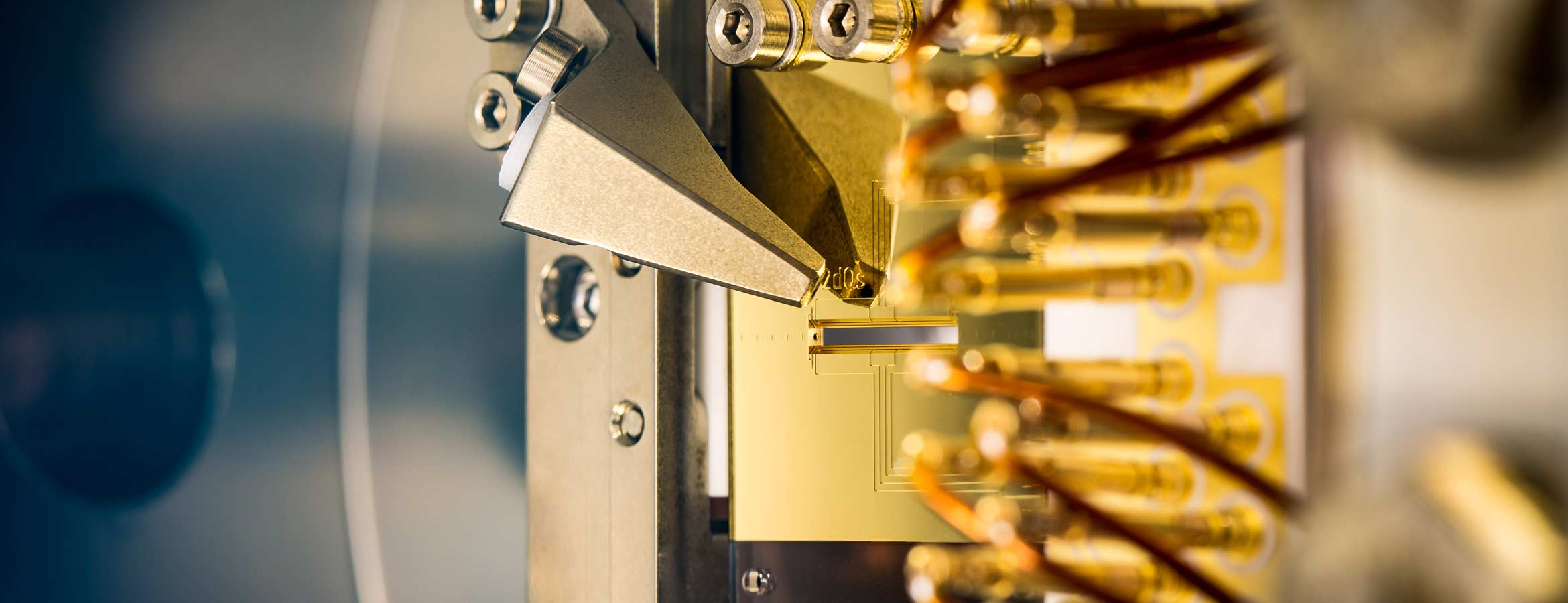Research Groups
BernienLab: Quantum Science Atom-by-Atom

The BernienLab studies quantum science by assembling large quantum systems using individual atoms trapped in optical tweezers. This platform is ideally suited to both explore fundamental questions,... Read more …
Ferlaino Lab - Dipolar Quantum Gases

The research team led by Francesca Ferlaino focuses on the study of dipolar quantum phenomena, using strongly magnetic atomic species. In 2012, the group has created the first Bose-Einstein... Read more …
Grimm Lab - Ultracold Atoms and Quantum Gases

The research group led by R. GRIMM investigates ultracold particle systems consisting of optically trapped quantum gases at temperatures close to absolute zero. Because of their superb experimental... Read more …
Kirchmair Lab - Superconducting quantum circuits

Gerhard Kirchmair’s research group works on superconducting circuits and their application for quantum computation and simulation. Superconducting Josephson junctions are used to realize the quantum... Read more …
Pichler Group - Quantum Science Theory

The research group led by Hannes Pichler studies quantum optical systems, quantum many-body physics and quantum information. The group aims at laying the theoretical foundations for next generation... Read more …
Emeritus Research Groups
Blatt Lab - Quantum Optics and Spectroscopy

The research group led by Rainer Blatt investigates quantum processes in a system of few ions held in ion traps. The experiments aim at achieving complete control over all quantum degrees of freedom in... Read more …
Zoller Group - Quantum Optics

Wittgenstein awardee Peter Zoller studies topics in the fields of theoretical quantum optics and atomic physics as well as quantum information and condensed matter theory. His main focus is on... Read more …
Most Recent Preprints
High-fidelity entanglement and coherent multi-qubit mapping in an atom array
arXiv:2506.13632
Show Abstract
Neutral atoms in optical tweezer arrays possess broad applicability for quantum information science, in computing, simulation, and metrology. Among atomic species, Ytterbium-171 is unique as it hosts multiple qubits, each of which is impactful for these distinct applications. Consequently, this atom is an ideal candidate to bridge multiple disciplines, which, more broadly, has been an increasingly effective strategy within the field of quantum science. Realizing the full potential of this synergy requires high-fidelity generation and transfer of many-particle entanglement between these distinct qubit degrees of freedom, and thus between these distinct applications. Here we demonstrate the creation and coherent mapping of entangled quantum states across multiple qubits in Ytterbium-171 tweezer arrays. We map entangled states onto the optical clock qubit from the nuclear spin qubit or the Rydberg qubit. We coherently transfer up to 20 atoms of a -ordered Greenberger-Horne-Zeilinger (GHZ) state from the interacting Rydberg manifold to the metastable nuclear spin manifold. The many-body state is generated via a novel disorder-robust pulse in a two-dimensional ladder geometry. We further find that clock-qubit-based spin detection applied to Rydberg and nuclear spin qubits facilitates atom-loss-detectable qubit measurements and Rydberg decay detection. This enables mid-circuit and delayed erasure detection, yielding an error-detected two-qubit gate fidelity of in the metastable qubits as well as enhanced GHZ state fidelities in analog preparation. These results establish a versatile architecture that advances multiple fields of quantum information science while also establishing bridges between them.
Fast and Error-Correctable Quantum RAM
arXiv:2503.19172v1
Show Abstract
More Preprints
Quantum devices can process data in a fundamentally different way than classical computers. To leverage this potential, many algorithms require the aid of a quantum Random Access Memory (QRAM), i.e. a module capable of efficiently loading datasets (both classical and quantum) onto the quantum processor. However, a realization of this fundamental building block is still outstanding, since existing proposals require prohibitively many resources for reliable implementations, or are not compatible with current architectures. Moreover, present approaches cannot be scaled-up, as they do not allow for efficient quantum error-correction. Here we develop a QRAM design, that enables fast and robust QRAM calls, naturally allows for fault-tolerant and error-corrected operation, and can be integrated on present hardware. Our proposal employs a special quantum resource state that is consumed during the QRAM call: we discuss how it can be assembled and processed efficiently in a dedicated module, and give detailed blueprints for modern neutral-atom processors. Our work places a long missing, fundamental component of quantum computers within reach of currently available technology; this opens the door to algorithms featuring practical quantum advantage, including search or oracular problems, quantum chemistry and machine learning.
All Publications








